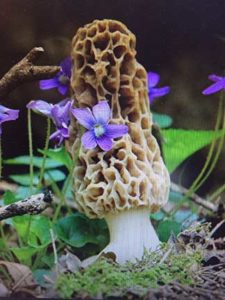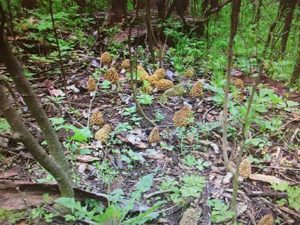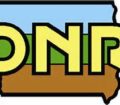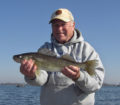
 By Clark Schmitz
By Clark Schmitz
One of the joys of spring for “shroomers” is the annual woodlands treasure hunt for the morel mushroom. The “Morchella”, the true morels, is a genus of edible sac fungi closely related to anatomically simpler cup fungi in the order “Pezizales”. These distinctive fungi have a honeycomb appearance, due to the network of ridges with pits composing their cap. Morels are prized by gourmet cooks, particularly in French cuisine. Due to difficulties in cultivation, commercial harvesting of wild morels has become a multimillion dollar industry in the temperate Northern Hemisphere.
Northwest Iowa produces good numbers of delicious morel mushrooms for those ready to put on their hiking boots and hit the timber. As temps climb into the 50’s and higher and spring rains refresh the undergrowth, the morel mushroom begins to emerge.
Many mushroom hunters have their secret “hot spots” and tricks to finding their hidden prize. Dead or dying trees are often a good place to start. Dead elm trees, old apple orchards, old ash and poplar trees along with pines can be especially good.
Morels are also commonly found near:
Burn sights, morels thrive on the nutrients that burned trees release back into the soil.
Areas disturbed by water, old flood plains, near rivers and washes.
Old logging areas, areas of lots of downed trees.
Soil types seem to matter to morels as well, Loamy (sandy/clay & decaying organic matter) soil and soil containing more calcium or lime are good morel sites.
When harvesting morels it is a good idea to carry them in a mesh bag as mushrooms disperse through the spread of spores. The more spores that are allowed to drop, the more mushrooms in the future. Leaving a few unharvested in each area will also help ensure morels in the future.
Being able to positively identify the morel mushrooms is very important. Some types of mushrooms can be a health hazard or even fatal. Some research ahead of your outing is advised. Mushrooms have a cap and a stalk. If you cut the stalk in half, the morel’s stalk will be completely hollow while false morels will have fuzz in there. If it isn’t hollow, don’t swallow!
 Darrell Roepke from Hinton, Ia. enjoyed mushroom hunting for over 65 years. Health challenges haven’t allowed him to hunt mushrooms in recent years but he always looked forward to beautiful spring days searching for morels. He explained that he liked to search for morels along rivers and streams where the soil was moist and sandy and around dead trees. He especially liked to hunt mushrooms in the timber, on a warm early spring day following a good rain. The morels they found would be part of a great dinner for family and friends!
Darrell Roepke from Hinton, Ia. enjoyed mushroom hunting for over 65 years. Health challenges haven’t allowed him to hunt mushrooms in recent years but he always looked forward to beautiful spring days searching for morels. He explained that he liked to search for morels along rivers and streams where the soil was moist and sandy and around dead trees. He especially liked to hunt mushrooms in the timber, on a warm early spring day following a good rain. The morels they found would be part of a great dinner for family and friends!
I’m convinced that for many the hunt (on a beautiful spring day) for morels is as much fun as the tasty treat which results from a successful outing.
Good luck on your next mushroom hunt!
















